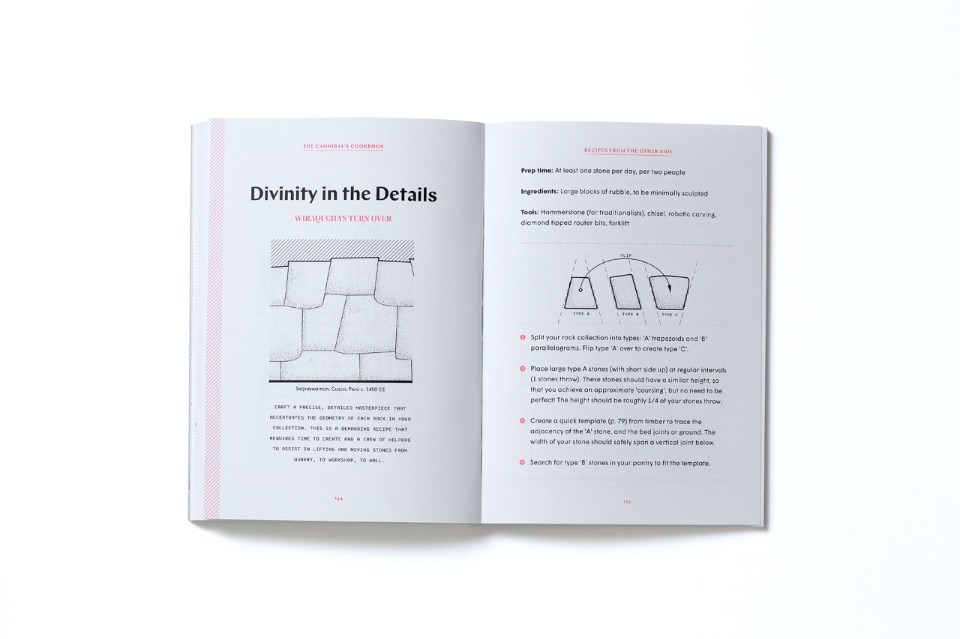The Cannibal’s Cookbook – a unique volume conceived by Brandon Clifford, professor at MIT – encourages heresy and rebellion, advocating a completely different model of architectural development from the one currently in use; he proposes that today’s buildings be divided into sections and recycled in enormous blocks for inclusion in future constructions, to generate an “eco-megalithic” future.

 View gallery
View gallery
This book is driven by the impressive amount of research on rediscovering megalithic construction methods that, for years, Clifford has carried out with a team of scientists. Their wide-ranging investigation of Cyclopean masonry involved everything from archaeological data to digital technologies.
Clifford’s study critiques today’s construction methods and draws on megalithic, or Cyclopean, structures to recycle the debris of architectural demolition, bringing it back to life through entirely new techniques.
The moment comes when the chef reveals his intention and clarifies the ties between the ingredients and the flavours: we are chewing Cyclopean architecture!
However this is not just a simple manual for analysing megalithic construction techniques: the book is a true bombshell, fearlessly exploding the world of architecture; by getting rid of contemporary times, defined as a self-destructive, mad delirium, Clifford takes us back to what Bruno Zevi called, “the Zero Mark,” a primigenial architecture – eternal and mythical in its construction processes – that, in this case, is projected into the future.
So the Cookbook functions as a time wormhole, a shortcut passage where past and future meet in the present, somewhere between references to lost centuries-old knowledge and hints on using that know-how today, thanks to such new technologies as 3D scanning, precision milling and algorithmic iterative programming.

 View gallery
View gallery














All of this has composed a cookbook, a distillation of the globe’s megalithic cultures throughout the millennia; the material is presented to the readers by the “mythological Giants” who built those mysterious Cyclopean structures. The ingredients are presented individually before being thrown into a cauldron where a primordial broth boils, slowly giving rise to something new.
At the end of the manuscript, we find a very useful glossary and a thorough afterword that explains the book’s conception together with other details of interest to readers with a special eye for graphics and typography. In fact, the graphic design by Johanna Lobdel and the perceptive, ironic illustrations by Joshua Longo, a Drexel University professor of Product Design, succeed in communicating both the information and spirit of Clifford’s work in the best and most refreshing way.
Like any self-respecting cookbook this “manuscript” – published in a 250 copies limited edition – also opens by whetting the reader’s appetite with a series of delicious starters followed by an assortment of entrées. Then the moment comes when the chef reveals his intention and clarifies the ties between the ingredients and the flavours: we are chewing Cyclopean architecture! At the end of the book you’ll be satiated but you won’t be able to help yourself from going back to savour other recipes from The Cannibal’s Cookbook.
- Title:
- The Cannibal’s Cookbook
- Author:
- Brandon Clifford (Matter Design Studio)
- Co-authors:
- Daniel Marshall, James Addison, Mackenzie Muhonen
- Artwork:
- Joshua Longo
- Book design:
- Johanna Lobdell
- ISBN:
- 978-0-9991673-0-4
- Year:
- 2017


























